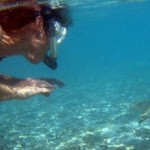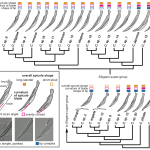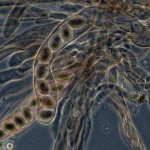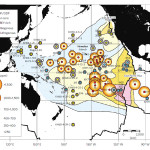Beth is an U.S. postdoc scientist at the Center for Geomicrobiology in Denmark studying tiny microbes that live at the bottom of the ocean and their role in global processes. You can check out her website to learn more about her work.
Greetings, lovers of the ocean depths! I sheepishly pop my head back in on the blog after failing miserably to send updates about the bitchin’ research I was doing at the bottom of the Pacific Ocean. Our voyage was a wild experiment in high-tech gadgetry and sleep deprivation. Come to think of it, I guess that is what almost every oceanographic cruise is like. I love my job!
So, now that I am back on land for a few weeks, please allow me to tell you a tale about the fascinating world of the marine subsurface. In case you think that life ends at the seafloor, where slimy creatures slither by in the dark, I am here to tell you that there is a vast habitat of life BENEATH the ocean floor, too. Depending on the part of the ocean, if you were to scoop up a tablespoon of the luscious brown sediments at the seafloor, you would find roughly one million to one billion microbes living in it! If you were to dig deeper down into those sediments, let’s say 10-100 meters or so, you would still find thousands to millions of cells in each tablespoon you dug up. Now, considering that 70% of Earth’s surface is covered by oceans, and that a large part of the seafloor underneath that is covered with some sediments, well then you end up with a massive blanket of sediments chock full of microbes. In fact, some researchers have calculated that marine sediments contain roughly 10 to the power of 30 microbes, which translates to more than half of all microbes on Earth and roughly one-third of all living carbon on Earth (Whitman et al. 1998). Can you believe it?! That’s a huge fraction of life on Earth ‘buried alive’ at the bottom of the ocean.

If that doesn’t blow your mind, then wait until you consider that there is more to the marine subsurface than sediments. Indeed, there is a vast rocky habitat beneath those sediments – the oceanic crust – which is also exposed to the bottom of the ocean at places like mid-ocean ridges and seamounts. This rocky environment is roughly ten times larger in volume than all of the sediments at the bottom of the ocean. Lest you think that rocks are boring and inhospitable, consider that massive volumes of water move through cracks and fissures in the rocks, and that this water can provide nutrients for life. Researchers are just now beginning to study this habitat to see if and how life survives there. Preliminary studies point to an active and diverse community of microbes growing in the rocky depths, but we have only begun to scratch the surface (so to speak).
So, that research cruise I mentioned at the beginning of this post, remember that? I was part of a team of scientists that were using seafloor and sub-seafloor observatories to explore life in the rocky subsurface. We spent a few weeks at sea with the totally badass Jason-II ROV gathering data and setting up experiments at these observatories. In my next post, I’ll give you more gory details, and also tell you more about some of the state-of-the-art science from the deep subsurface. Stay tuned! In the meantime, if you want to bone up on your deep subsurface science, my colleagues and I recently published a review article that you might find handy – Orcutt et al. 2011 (disclaimer: shameless self-promotion!).
References:
Orcutt, B., J.B. Sylvan, N.J. Knab, and K.J. Edwards. 2011. Microbial ecology of the dark ocean above, at and below the seafloor. Microbiology and Molecular Biology Reviews 75(2): 361-422.
Whitman, W. B., D. C. Coleman, and W. J. Wiebe. 1998. Prokaryotes:the unseen majority. Proc. Natl. Acad. Sci. U. S. A. 95:6578–6583.
Share the post "Scientist in Residence: Beth Orcutt – “There is More to the Marine Subsurface than Sediments”"





